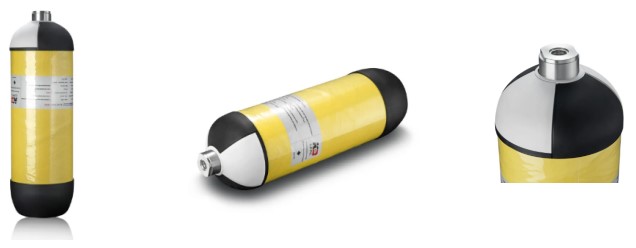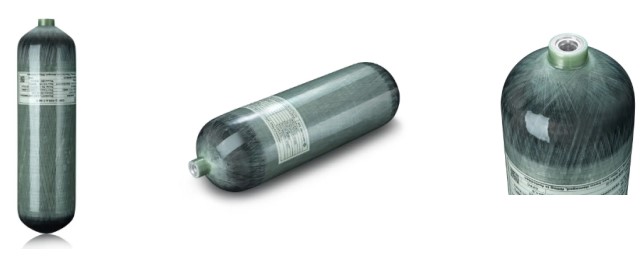In recent years, the landscape of gas storage technology has witnessed a revolutionary shift with the advent of Carbon Fiber Composite Cylinders. These cylinders, designed for high-pressure compressed air storage, incorporate a sophisticated combination of materials, including an aluminum liner, carbon fiber winding, and an outer layer of glass fiber. This article delves into the intricate functionality of each component, examining their collective role in ensuring safety, portability, stability, durability, and reliability in comparison to traditional steel cylinders.
Aluminum Liner:
The aluminum liner serves as the innermost layer of the composite cylinder. Its primary function is to maintain the structural integrity of the cylinder, working as a container of compressed air. The use of aluminum contributes to the cylinder‘s lightweight design, facilitating enhanced portability without compromising strength.
Carbon Fiber Winding:
The carbon fiber winding, enveloping the aluminum liner, is a key component that imparts exceptional strength to the cylinder. Carbon fiber’s high tensile strength and low weight make it an ideal material for reinforcing the cylinder, ensuring it can withstand the demanding conditions associated with gas storage. Moreover, the seamless winding technique enhances structural uniformity, minimizing weak points and enhancing overall stability.
Outer Layer of Glass Fiber:
The outer layer of glass fiber adds an additional layer of protection to the composite cylinder. This layer functions as a protective shield, enhancing durability and safeguarding the inner layers from external factors such as abrasion, impact, and environmental elements. The combination of glass fiber with carbon fiber creates a robust outer shell that enhances the overall longevity and reliability of the cylinder.
Performance Comparison with Traditional Steel Cylinders:
Safety: Carbon fiber composite cylinders boast superior safety features.
Portability: The lightweight design of carbon fiber composite cylinders provides a distinct advantage in terms of portability compared to their steel counterparts. This feature is especially crucial in applications requiring mobility, such as firefighting, rescue missions, and medical use.
Stability: The combination of aluminum, carbon fiber, and glass fiber ensures structural stability, minimizing deformation under high pressure or any impacts from outside. This stability contributes to the overall reliability of the cylinder in various operational environments.
Durability: Carbon fiber composite cylinders exhibit enhanced durability, with the outer layer of glass fiber providing an additional layer of protection against wear and tear. This durability ensures a longer lifespan compared to traditional steel cylinders.
Reliability: The meticulous engineering and quality control processes employed in the production of carbon fiber composite cylinders contribute to their heightened reliability.
Conclusion:
The integration of aluminum, carbon fiber, and glass fiber in Carbon Fiber Composite Cylinders represents a paradigm shift in gas storage technology. The multifaceted benefits, including safety, portability, stability, durability, and reliability, position these cylinders as a superior alternative to traditional steel cylinders. As industries continue to prioritize efficiency and safety, the evolution of gas storage technology through carbon fiber composites marks a significant step forward in meeting these demands.
Post time: Nov-10-2023


